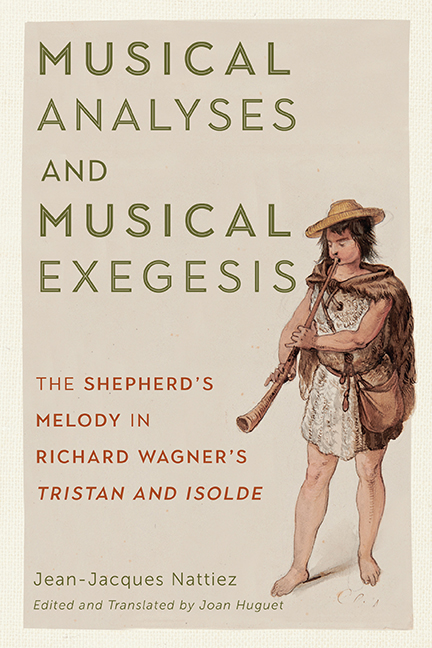 Musical Analyses and Musical Exegesis
Musical Analyses and Musical Exegesis Published online by Cambridge University Press: 02 June 2021
Sketch Study
I began my discussion of source study in chapter 7 by situating it within the taxonomy of literary criticism techniques laid out by Gustave Rudler. Similarly, I will begin this chapter by reviewing what Rudler refers to as critique de genèse, with which we can recreate Wagner's poietic process for the solo. We will thus move from the solo's general sources of inspiration to the development of its final musical text.
Rudler rightly suggests that the study of a work's sketches should not begin until the study of its sources is “completed, or at least well underway.” This is exactly how I have proceeded, as my investigations in chapter 7 have allowed me to show how Wagner employed the borrowed materials that inspired him. However, I have saved another source for chapter 11, a citation from Schopenhauer that will shed new light on the interpretations in chapters 7 and 8. I have followed Rudler's advice by first examining Wagner's writings and letters, a process that my expanded tripartite model refers to as external poietics. In contrast, my study of the solo's development in this chapter will rely solely on the information provided by Wagner's sketches.
Rudler states that the researcher must then proceed by studying the work's first drafts and variants. I view these sketches as external documents, insofar as they differ from the final version of the work. Jean Molino describes them as “poietic documents, in which we must uncover everything that differs from the published version of a work, no matter what its nature, in order to bring to light the circumstances of its production.”
But another poietic approach is also available to us, which I refer to as inductive poeitics. This method hypothesizes about the creative process from the starting point of the musical structures present in the work's final version. This approach does not appear in Rudler's methodology; however, Molino considers it in his survey of poietic studies, deeming it to be an acceptable approach. He writes:
We must add a final source of poietic information to our list, which is both the most obvious and the most unexpected: the text itself. J.-J. Nattiez employs an inductive poietic methodology that breaks a composition down into the actions that produced it, each of which leaves its trace on the final version.
To save this book to your Kindle, first ensure [email protected] is added to your Approved Personal Document E-mail List under your Personal Document Settings on the Manage Your Content and Devices page of your Amazon account. Then enter the ‘name’ part of your Kindle email address below. Find out more about saving to your Kindle.
Note you can select to save to either the @free.kindle.com or @kindle.com variations. ‘@free.kindle.com’ emails are free but can only be saved to your device when it is connected to wi-fi. ‘@kindle.com’ emails can be delivered even when you are not connected to wi-fi, but note that service fees apply.
Find out more about the Kindle Personal Document Service.
To save content items to your account, please confirm that you agree to abide by our usage policies. If this is the first time you use this feature, you will be asked to authorise Cambridge Core to connect with your account. Find out more about saving content to Dropbox.
To save content items to your account, please confirm that you agree to abide by our usage policies. If this is the first time you use this feature, you will be asked to authorise Cambridge Core to connect with your account. Find out more about saving content to Google Drive.